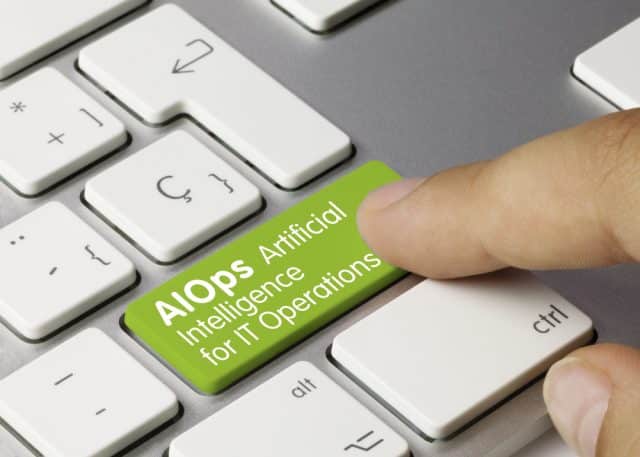Why an adaptive learning model is the way forward in AIOps [Q&A]

Modern IT environments are massively distributed, cloud-native, and constantly shifting. But traditional monitoring and AIOps tools rely heavily on fixed rules or siloed models -- they can flag anomalies or correlate alerts, but they don’t understand why something is happening or what to do next.
We spoke to Casey Kindiger, founder and CEO of Grokstream, to discuss new solutions that blend predictive, causal, and generative AI to offer innovative self-healing capabilities to enterprises.
BN: Why is a blended model essential for modern IT operational environments, and how does it outperform traditional methods?
CK: While traditional methods can show up problems they don’t help in understanding why they’re occurring. What Grokstream’s Grok AIOps platform does differently is blend predictive, causal, and generative AI into a single adaptive system.
- Predictive AI (like classification) helps forecast impact and surface likely root causes.
- Causal analysis -- and we use hierarchical clustering for this -- helps identify systemic patterns in failures and dependencies.
- Generative AI is the layer that synthesizes across all of that: logs, metrics, topology, historical incidents, even static KB articles -- and turns it into a human-readable narrative.
So it’s not just ‘what’s wrong?’ -- it’s ‘why now?’, ‘what’s likely to break next?’, and ‘what can I do about it?’
The result is faster incident triage, less alert fatigue, and real operational intelligence -- not just data aggregation.
BN: Adaptive learning is central to this approach. Can you explain what makes an adaptive learning model different -- and more effective -- compared to other AIOps and Observability tools?
CK: Most AIOps tools still operate like static pipelines. They rely on a one-time ML model or pre-defined logic that’s frozen in time. But environments change -- rapidly.
What makes Grok different is that we’ve built a truly adaptive learning system. That means Grok learns over time -- not just from alerts and logs, but from how incidents are grouped, how they’re resolved, and how operators respond.
So when a pattern emerges -- say, a database latency issue that’s tied to a specific release window -- Grok picks that up. And it remembers. It adjusts future predictions and root cause inference based on that feedback loop.
This makes it more effective over time. It gets sharper, more contextual, and less noisy, which is critical, because you can’t 'set and forget' intelligence in modern ops. Grok doesn’t just observe your environment -- it grows with it.
BN: Many AIOps platforms lean heavily on either prediction or automation. Why is it important to include causal analysis and generative reasoning in the mix, and what kind of outcomes does that unlock for IT Ops teams?
CK: Prediction and automation are helpful but they only solve part of the problem. They answer, ‘what might happen?’ or ‘what can I script?’ But when something breaks in production, ops teams don’t need automation -- they need understanding.
Causal analysis gives you that deeper understanding. For example, using hierarchical clustering to group incidents by root cause patterns -- not just temporal proximity -- gives ops teams insight into why something is failing, not just what is failing.
Then, you add generative reasoning to translate that insight into action and summarize related incidents, reference documentation, correlate logs with config changes, and output a plain-English explanation.
The outcome is that Ops teams move faster. Mean Time to Repair (MTTR) goes down. You can trust the system because it explains itself, and when something novel happens, AIOps can tell you how it relates to what you've seen before -- even if the exact signature is new.
BN: As environments scale and change rapidly, how do you ensure an adaptive model continues to learn the right things without overwhelming users with false positives or irrelevant insights?
CK: Great question, and it’s one of the hardest problems in AIOps: how do you keep learning without creating more noise?
Grok handles this with multiple guardrails:
- First, we have signal validation: predictions and cluster relationships are reinforced only when operators confirm them, take action, or annotate outcomes.
- Second, we use contextual suppression -- if Grok sees recurring events that don’t lead to action, it starts down-ranking or auto-grouping them.
- And third, we use adaptive thresholds that evolve with your environment -- so we’re not just flagging changes, we’re flagging meaningful deviations.
It’s not just machine learning -- it’s user-informed learning. That’s what keeps the system sharp and usable at scale.
BN: Looking ahead, how do you see the role of generative AI evolving within AIOps, and what are some future capabilities that it can deliver because of this multi-AI approach?
CK: Generative AI is going to completely reshape how operators interact with infrastructure. It’s already changing how we summarize incidents and synthesize knowledge -- but that’s just the beginning.
In the future, I think we’ll see generative AI acting as a contextual teammate -- explaining anomalies, simulating the impact of a config change, even co-authoring runbooks.
Grok is uniquely positioned here because our generative layer isn’t bolted on -- it’s tightly integrated with our predictive and causal engines. That means it doesn’t just hallucinate explanations -- it builds them from grounded system knowledge, historical alert and log patterns, and real incident data.
We’re already seeing users get to ‘why’ and ‘what now’ answers without digging through dashboards. In the next phase, Grok will help teams proactively model risk, recommend next steps, and ultimately close the loop on resolution -- automatically when possible, collaboratively when needed.
Image credit: Momius/depositphotos.com
